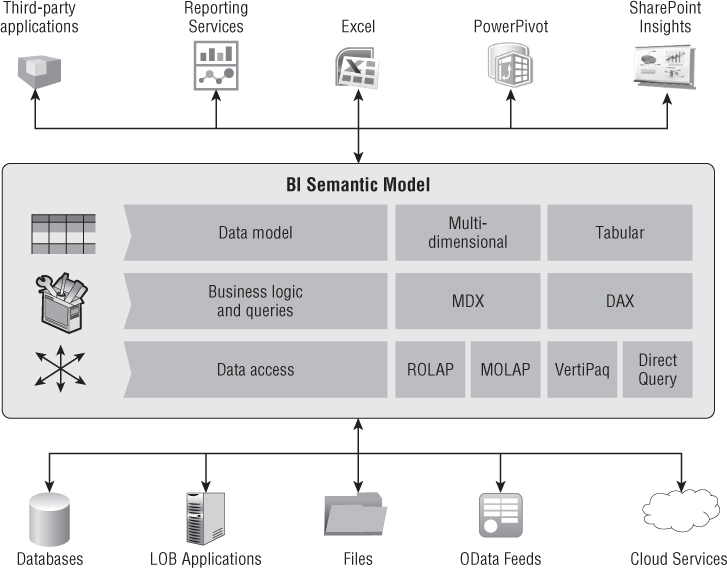What Is a BI Semantic Model?
The Business Intelligence Semantic Model is defined by Microsoft as one model for all user experiences that includes reporting, analytics, scorecards, dashboards, and custom applications. It is a rich, scalable, and flexible model that can be viewed conceptually as a three-layer model.
- Data Model: The conceptual model that contains all the relationships between the different data entities in the organization. It supports both multidimensional and tabular data modeling.
- Business Logic & Queries: Represents the intelligence or semantics in the model. Calculations are embedded in the model using either MDX or DAX languages. Both languages are supported and can be used to extend basic business logic.
- Data Access: Where source data is integrated. Multiple data sources are supported natively including data coming from relational databases, flat files, OData feeds, and so on.
Figure 58.1 illustrates the three layers of the BI Semantic Model.
Figure 58.1 The three layers of the BI Semantic Model.

One of the objectives of the BI Semantic Model is to simplify development and querying. The development environment of BI Semantic Models resembles tables displayed as tabs related to one another and is the reason why it is sometimes called Tabular models. Querying is simplified because BI Semantic Models can be queried either by using Multidimensional Expressions ...
Get Microsoft SQL Server 2012 Bible now with the O’Reilly learning platform.
O’Reilly members experience books, live events, courses curated by job role, and more from O’Reilly and nearly 200 top publishers.

